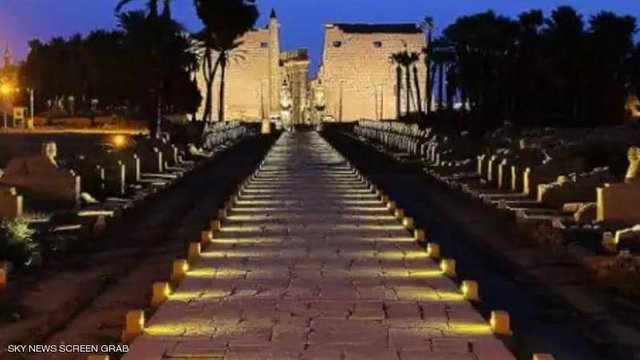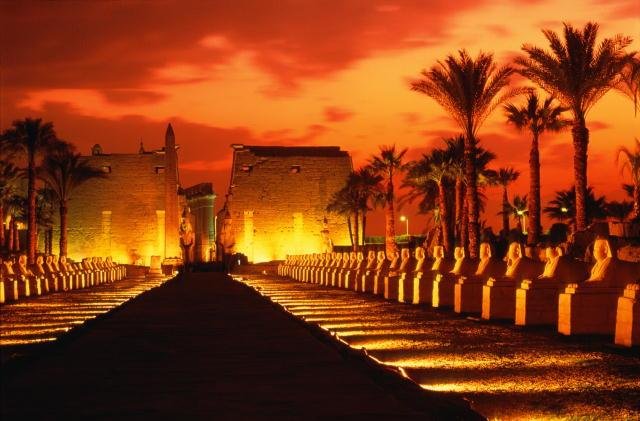Rams are the oldest road in the world
Egypt inaugurated weekday evening the Rams Road linking the Karnak associated urban center temples within the way south of the country, and an outsized inventive ceremony was command to shed light-weight on the importance of this historic road.
The Egyptian government is curious about this event and says that it'll create Luxor Governorate an "open museum".
archaeologist Zahi Hawass describes the event as "the most significant archeologic project of the 21st century."
The length of the rams road is about 2,700 meters. it had been engineered throughout the eighteenth dynasty, about 3 thousand years ago.Tourism is one in every of the foremost necessary sources of financial gain on which Egypt depends. Egypt' revenues from touristry within the half of this year amounted to regarding four billion dollars, and therefore the country received about 3 and a half million tourists, in step with officials.
Last April, Egypt command a solemn ceremony during which the mummies of twenty-two ancient Egyptian royal figures were transferred from the Egyptian repository in Tahrir sq. to the National repository of Egyptian Civilization in Fustat, east of Cairo.
The mummies were carried on specially equipped chariots, and were adorned with Pharaonic drawings and inscriptions, and every chariot bore the name of the king in it in Arabic, English and ancient Egyptian hieroglyphs.The within goes to Karnak Temple on a arenaceous rock paseo on either side of that are 2 long rows of sphinx-shaped statues, a number of which have human heads, and most of them have the heads of rams, or jackals.
The ram in ancient Egyptian culture symbolized fertility.
once the top of the harvest season, the sons of Thebes celebrated the feast of the god of their city, Amun, wherever the priests came out with a sculpture of the god from Karnak temple on a special visit to his girls in urban center temple, wherever he spends eleven days.
The monks were needed to perform these rites doubly a year - the primary on the Feast of the Harvest, and therefore the second on the Feast of the Ascension of the King.
Thus, this road, that is named the "Royal Processions Road", is that the oldest non secular ceremonial road in history.

